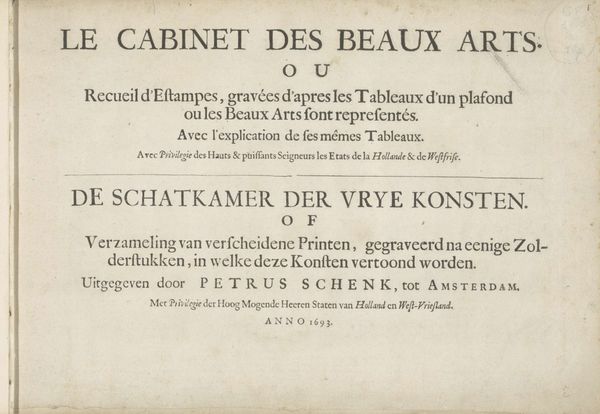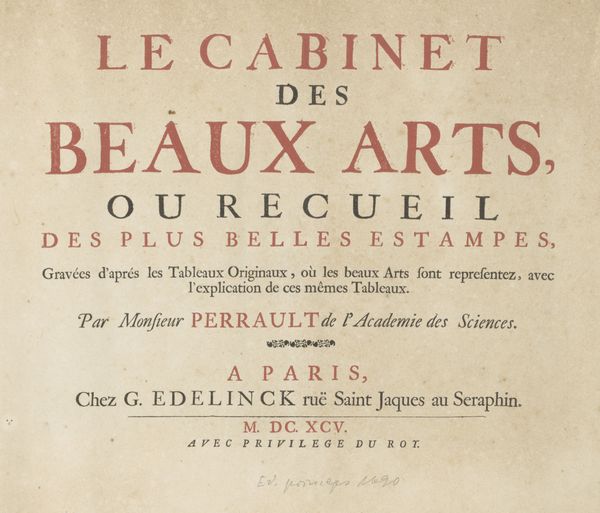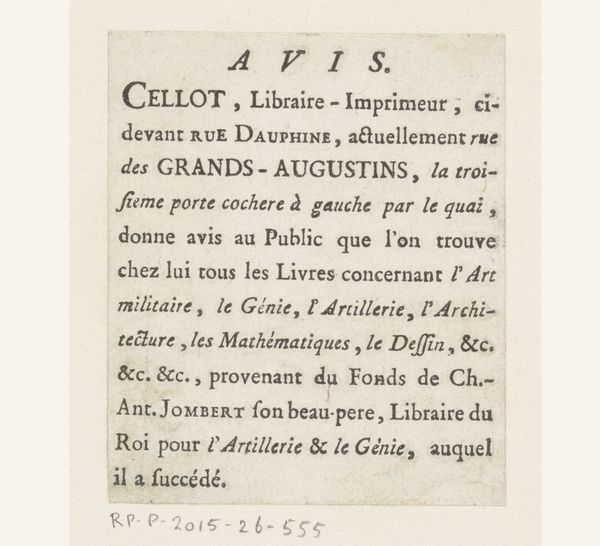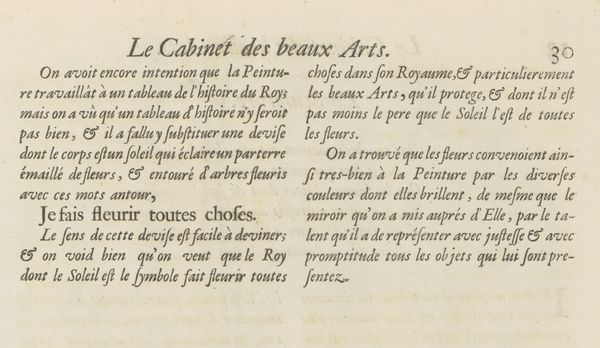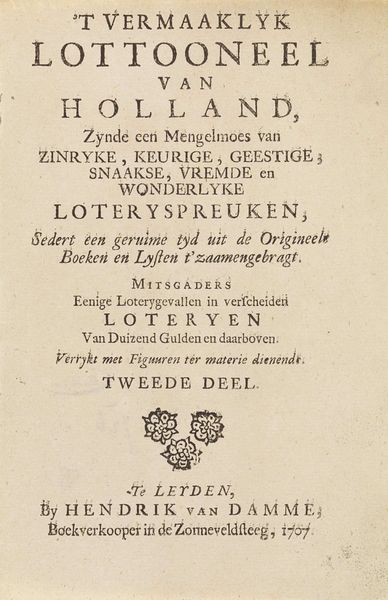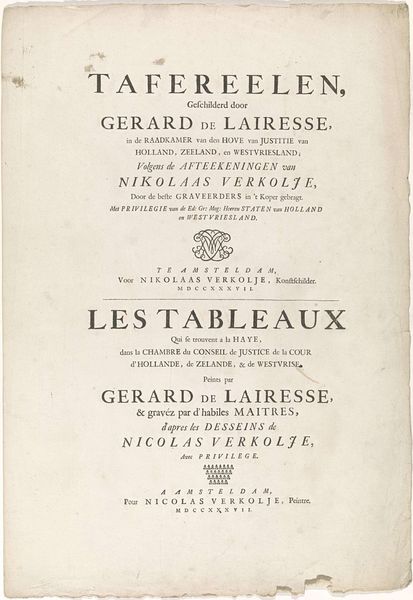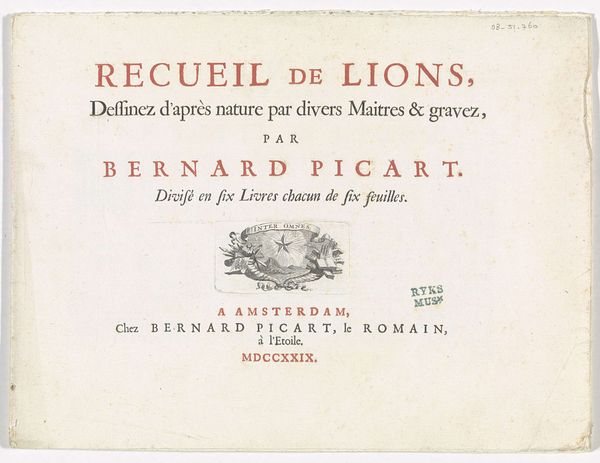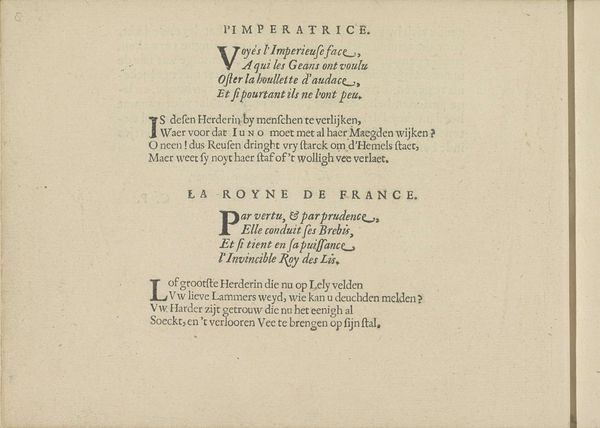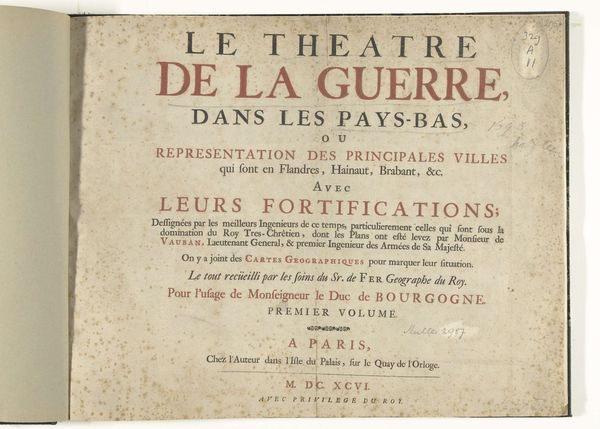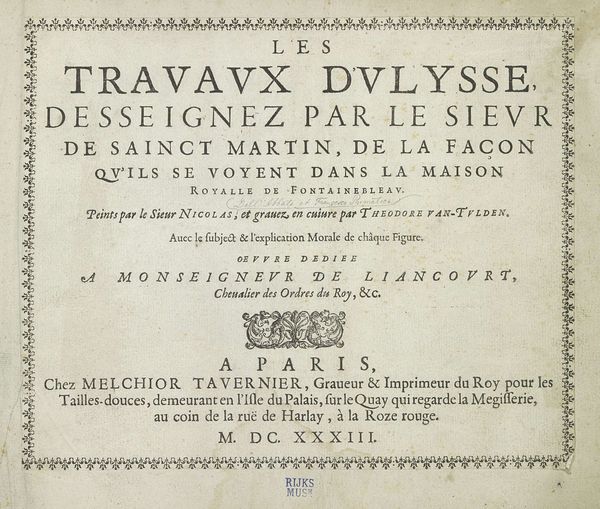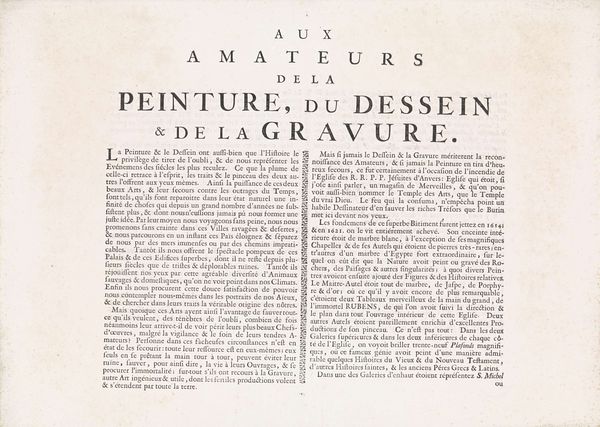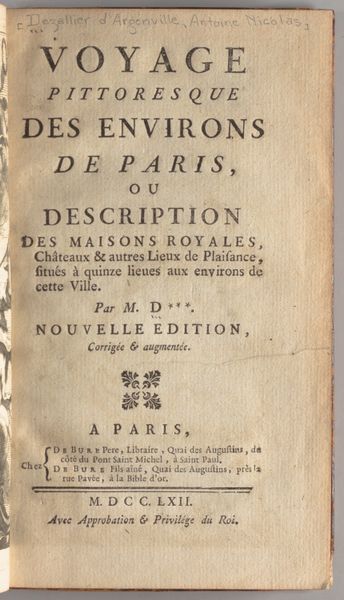
Explication des Vignettes de la Seconde Edition des Oeuvres de Boileau 1729
0:00
0:00
print, etching, typography
#
baroque
# print
#
etching
#
typography
#
academic-art
Dimensions: height 190 mm, width 500 mm
Copyright: Rijks Museum: Open Domain
Curator: Examining this print by Bernard Picart, "Explication des Vignettes de la Seconde Edition des Oeuvres de Boileau," from 1729 at the Rijksmuseum, I immediately perceive a stark visual declaration. It seems less a decorative title page and more of an assertion of intellectual property. Editor: My initial reaction aligns with your observation about asserting intellectual ownership, but I’d add that its directness speaks volumes about the burgeoning print culture of the era, particularly within Amsterdam’s commercial milieu. How were prints like this viewed and consumed in society at that time? Curator: That's a vital question. In the social context of the 18th century, works such as this would circulate among the intellectual elite. We can interpret Picart's stylistic approach—a blend of Baroque dynamism and academic rigor—as catering to a learned audience concerned with both aesthetic appeal and intellectual authority. The vignette explication promised revisions and new designs in Boileau's works, a claim of significance for the republic of letters. Editor: Absolutely. The academic quality is notable—and undoubtedly affects how it was originally received. And this second edition status signals the growing importance of revisions, commentary, and accessibility in literature’s public role. Could we also analyze the implications behind Picart naming himself as part of the publishing house address on the title page? Curator: The emphasis on Picart's name—both as artist and within the publishing information "Chez B. Picart le Romain"—demonstrates the evolving relationship between artist and publication, suggesting increased agency. It seems Picart wielded enough social and professional influence that this piece needed to communicate not only the written content, but its social and creative origins, a key step toward modern authorship. Editor: This deeper insight certainly changes how I consider such title pages. By examining this piece from a more historical context, its inherent layers emerge beyond surface impressions. Curator: Indeed, the combination of art and typography can be interpreted as an object embedded within specific artistic, social, and economic narratives that extend to this very day.
Comments
No comments
Be the first to comment and join the conversation on the ultimate creative platform.
